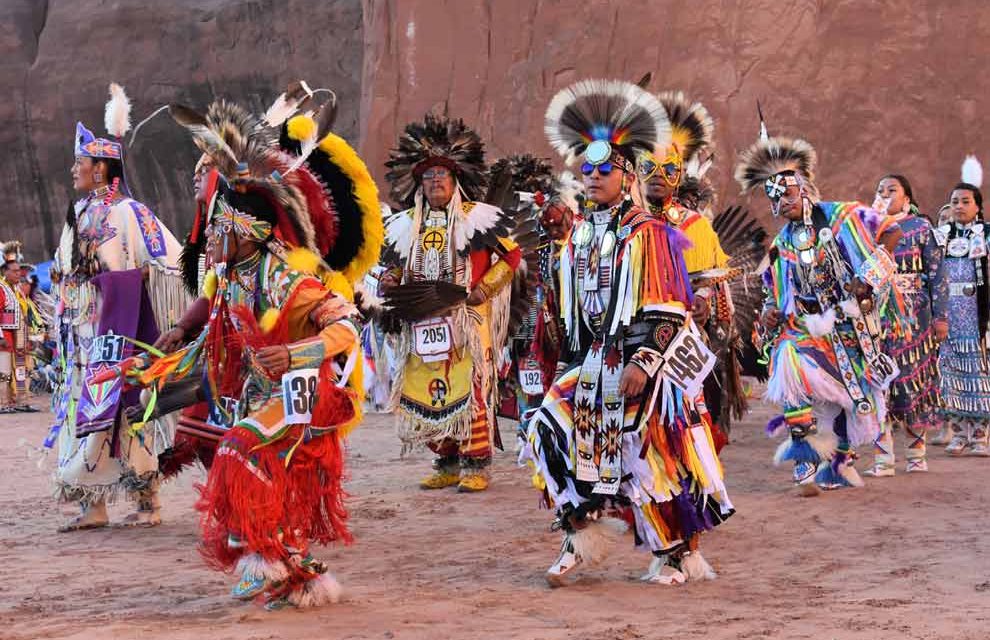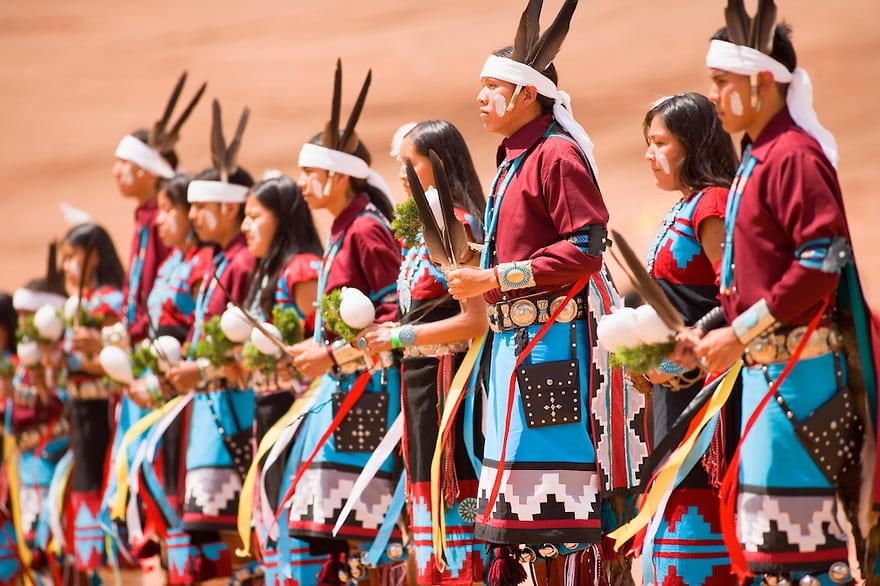
Echoes of Hózhó: The Enduring Power of Navajo Prosperity Ceremonies
In the sprawling, sun-drenched landscapes of the Navajo Nation, where mesas rise like ancient sentinels and the wind whispers through sagebrush, a profound understanding of prosperity permeates the very fabric of life. Far removed from the Western metric of material wealth, Navajo (Diné) prosperity is an intricate tapestry woven from spiritual balance, communal well-being, physical health, and harmony with the natural world – a concept encapsulated by the untranslatable, all-encompassing term: Hózhó. To achieve and maintain Hózhó, the Diné have meticulously preserved and practiced an ancient system of ceremonies, potent rituals designed not merely to ask for fortune, but to actively restore and reinforce a state of beauty and order that naturally invites abundance.
At the heart of Diné spiritual life, and central to the pursuit of prosperity, lies the Blessingway (Hózhóójí) ceremony. Unlike many other Navajo chantways which are primarily curative, addressing illness or misfortune, the Blessingway is preventative and generative. Its purpose is to attract good, to bless, to ensure success, and to place individuals and their homes into a state of Hózhó. It is performed for a multitude of life events: at the birth of a child, before a long journey, upon the construction of a new home (Hogan), to bless livestock, to ensure a good harvest, or even for a community leader assuming new responsibilities.
A Blessingway is not a brief affair. It is a multi-day ceremony, typically spanning two to three nights, characterized by the rhythmic cadence of ancient chants, prayers, and specific ritual actions. The core narrative of the Blessingway recounts the creation of the Diné people and the establishment of the universe in a state of Hózhó. By reenacting these primordial events, participants are metaphorically brought back to this original state of balance and beauty. "The Blessingway is our foundation," explains Sarah Begay, a Navajo elder and cultural preservationist. "It reminds us of where we come from, how the world was made in beauty, and how we must strive to live in that same beauty every day. When we are in Hózhó, prosperity naturally flows to us, not just money, but good health, strong family, and a peaceful mind."
Central to the Blessingway, and indeed many Navajo ceremonies, is the use of sacred corn pollen (táádíín). Gathered from the tassel of the corn plant, a symbol of life and sustenance, corn pollen is sprinkled as an offering to the Holy People (Diyin Diné) and applied to the body as a blessing. It represents life, renewal, and the connection between humans and the sacred. Prayers offered with corn pollen are believed to carry intentions directly to the spiritual realm, invoking blessings for fertility, health, and a fruitful existence.
The ceremonial space itself, often a traditional hogan, is imbued with profound significance. The hogan, with its circular design and east-facing entrance, is a microcosm of the Diné universe, symbolizing the womb of Mother Earth. Performing ceremonies within its sacred confines reinforces the connection to land, ancestry, and the cosmic order, drawing blessings into the home and, by extension, into the lives of its inhabitants.

While the Blessingway is the paramount ceremony for attracting and maintaining prosperity in a holistic sense, other healing chantways indirectly contribute to this state by restoring Hózhó when it has been disrupted. For instance, the Nightway (Kléjii), a complex nine-night ceremony, or the Mountainway (Dziłkʼijii), often involve elaborate sand paintings and chants to heal specific ailments or imbalances caused by contact with dangerous forces. By curing illness, dispelling evil, or resolving psychological distress, these ceremonies return an individual to a state of wholeness, making them receptive to the blessings of Hózhó and, consequently, to prosperity. A sick person cannot fully participate in or enjoy life’s abundance; thus, healing is a fundamental prerequisite for prosperity.
The Hataałii (singer or medicine person) is the indispensable custodian and practitioner of these complex ceremonies. These highly revered individuals undergo decades of rigorous training, memorizing hundreds of songs, prayers, and intricate ritual instructions. Their knowledge encompasses not only the mechanics of the ceremonies but also a deep understanding of Navajo philosophy, cosmology, and the specific spiritual conditions that require particular ceremonial interventions. "A Hataałii is a living library, a bridge between our world and the spirit world," states Dr. Peterson Zah, former Navajo Nation President. "Their dedication ensures the continuity of our traditions, which are vital for our well-being and our prosperity as a people." The decline in the number of young people pursuing this arduous path is a concern for many, highlighting the fragility of oral traditions in a rapidly changing world.
Sand paintings, or dry paintings (iikááh), are another breathtaking and potent element of many Navajo healing ceremonies, though not typically the Blessingway. Created on the hogan floor using pulverized minerals, plant pigments, and cornmeal, these intricate, temporary artworks depict sacred beings, mythological events, and cosmic patterns. Their purpose is to attract the Holy People into the ceremonial space, allowing the patient to absorb their healing power. The patient sits on the painting, becoming one with the sacred imagery, thereby cleansing and rebalancing their being. Crucially, these paintings are destroyed before dawn, their ephemeral nature underscoring the transient nature of illness and the cyclical flow of life and healing. The destruction also ensures that the sacred power, once absorbed, does not remain fixed but returns to its source.
It is critical to understand that Diné prosperity extends far beyond the accumulation of material wealth. While a successful harvest or a healthy flock of sheep is certainly valued, true prosperity, as defined by Hózhó, encompasses:
- Physical Health: A strong body, free from illness, capable of contributing to family and community.
- Mental and Emotional Well-being: A clear mind, peace of spirit, freedom from worry and anxiety.
- Strong Family and Community Bonds: Harmonious relationships, mutual support, and the continuation of lineage.
- Spiritual Harmony: A deep connection to the Holy People, adherence to traditional teachings, and a sense of purpose.
- Balance with Nature: Respect for the land (Diné Bikéyah), animals, and natural resources, understanding that human well-being is inextricably linked to the health of the environment.

This holistic view informs the very nature of the ceremonies. They are not transactional prayers for specific items, but rather a profound process of alignment – aligning the individual, family, and community with the cosmic order, thereby creating an environment where all forms of good fortune can flourish. The ceremonies foster a sense of responsibility and reciprocity, reminding participants that receiving blessings also entails the duty to live in a way that honors those blessings and contributes to the collective good.
In an era marked by rapid globalization and the pressures of cultural assimilation, these traditional Navajo ceremonies for prosperity stand as powerful testaments to the resilience and enduring spiritual strength of the Diné people. They are not relics of the past but living, breathing practices that continue to provide guidance, healing, and a profound sense of identity. By maintaining Hózhó through these sacred rites, the Navajo people continue to cultivate a form of prosperity that is deeply rooted, sustainable, and profoundly enriching – a prosperity that resonates with the echoes of beauty, balance, and harmony across their sacred lands. The continuation of these ceremonies ensures that the Diné can navigate the complexities of the modern world while remaining firmly anchored to the wisdom of their ancestors, fostering a future where true abundance, in all its sacred forms, can thrive.


